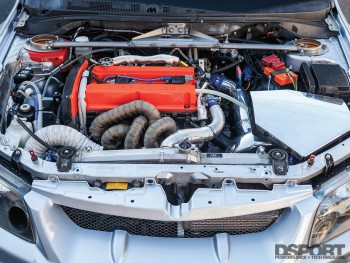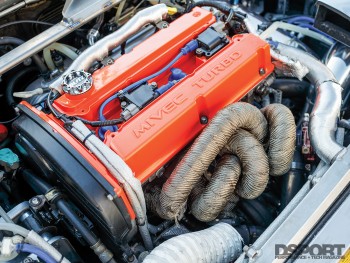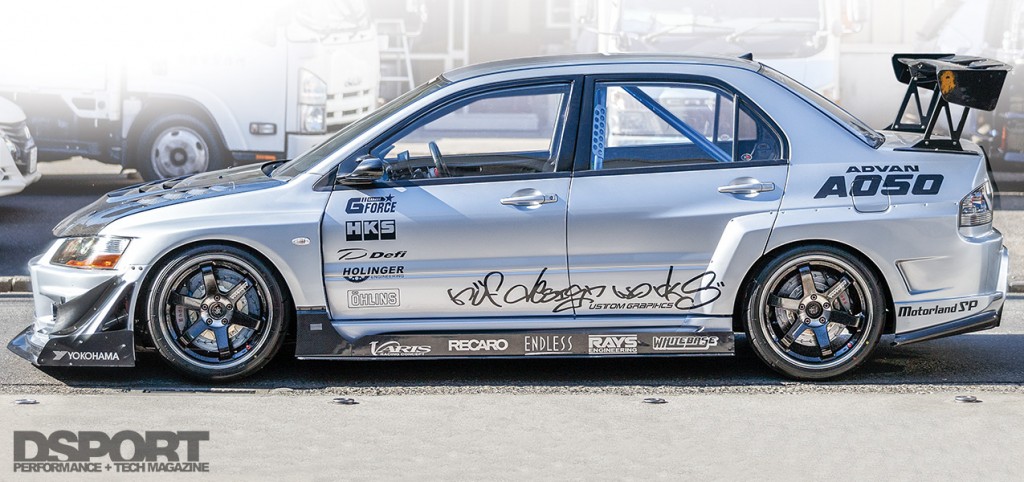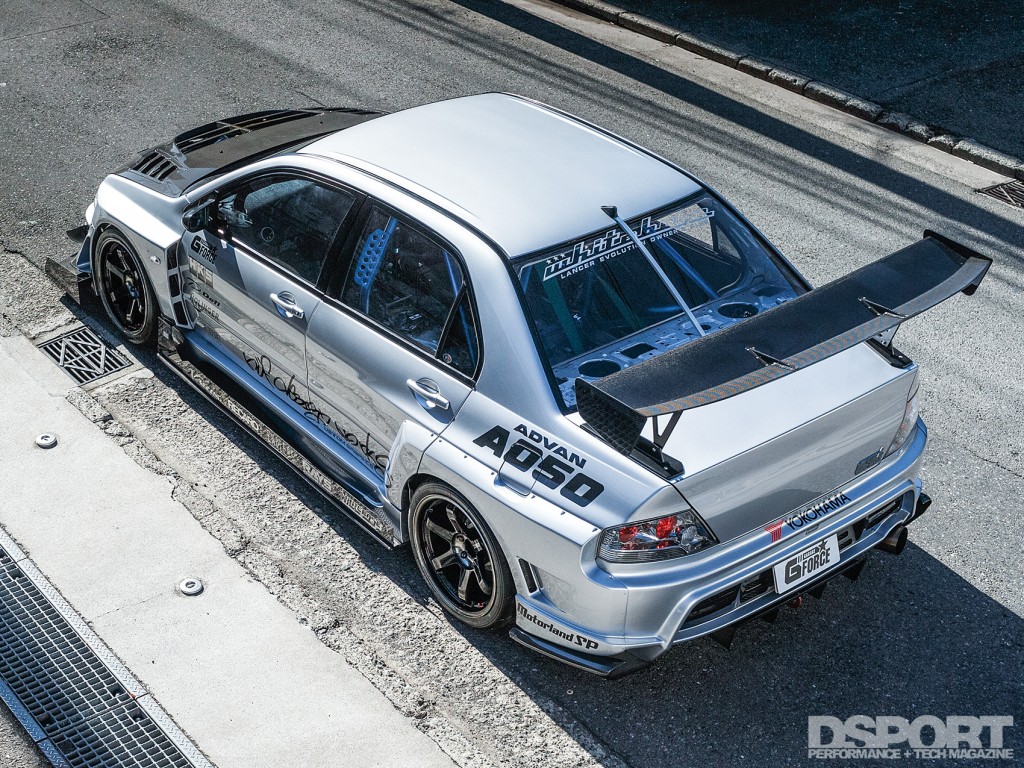Air Pump Bump
Garage G-Force’s long history with Mitsubishi’s venerable 4G63 engine made building this engine a straightforward task. As the doctor intends to drive the car off track as well as on, streetability was important. He wasn’t attempting to compete in the unlimited class and didn’t want to have to drive the streets like he was in the midst of competition. The MIVEC- equipped mill was thus plucked from the engine bay and disassembled. The iron block’s cylinders were overbored 1mm and honed before equipping the block with a complete TOMEI Powered rotating assembly. Comprised of 86mm, 8.4-to-1 compression pistons, H-beam connecting rods and a 100mm stroker crankshaft, the shortblock displacement increased from 1,998cc to 2,324cc. This 16-percent gain in displacement, along with a longer stroke, adds more torque to the already undersquare engine dimensions. With a stroke that is over 13-percent longer than stock, the peak engine speed (RPM) will be limited by piston speed, but torque output will increase.
To help fill the cylinders, Garage G-Force ported and polished the MIVEC cylinder head before equipping it with WPC-treated factory valves with a recommended valve spring upgrade from TOMEI. Atop the new valvetrain spin a pair of TOMEI 270-degree PROCAMS, which provide 11.5mm valve lift. Compared to the factory bump sticks, that’s an increase of 14 and 10 degrees of duration (intake and exhaust, respectively) and 1.5mm of additional valve lift, complementing the port work and facilitating more efficient airflow in and out of the cylinders.
Boosting the Block
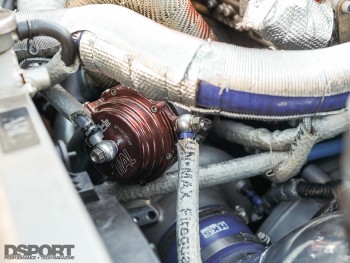 Boasting a larger and stronger 4G63 engine under the hood, it was time to address the forced-induction upgrade. Comparing the numerous options available, the BorgWarner EFR 8374 turbocharger was selected for boost duty. A Full-Race Motorsports tubular manifold positions the turbocharger in a low-mount configuration, feeding the twin-scroll turbocharger high-enthalpy gasses for boost production. Dual TiAL Sport wastegates maintain boost pressure at a peak of 32 psi. Once tuned, peak power checked in at 665 horsepower and 566 lb-ft torque to the wheels.
Boasting a larger and stronger 4G63 engine under the hood, it was time to address the forced-induction upgrade. Comparing the numerous options available, the BorgWarner EFR 8374 turbocharger was selected for boost duty. A Full-Race Motorsports tubular manifold positions the turbocharger in a low-mount configuration, feeding the twin-scroll turbocharger high-enthalpy gasses for boost production. Dual TiAL Sport wastegates maintain boost pressure at a peak of 32 psi. Once tuned, peak power checked in at 665 horsepower and 566 lb-ft torque to the wheels.
Divide to Conquer
Although this isn’t the highest output 4G63 powered Mitsubishi on record, the parts selected for the engine help to produce a significant increase in output over stock. However, producing more power means little if it doesn’t make it to the ground. Therefore, an Exedy Carbon-R clutch and flywheel convert torque at the crank into movement by way of a Holinger MF-E9 sequential transmission. While the AYC handles the torque split at the back, a Cusco RS 1-way LSD divides the torque being delivered to the front wheels.
From Plan to Practice
The doctor made great use of his investment, competing at the grassroots level at local events in Aomori. Unfortunately, Aomori’s geography leaves it covered in snow during the wintertime, so the EVO was entrusted to Garage G-Force to not only store at the Yokohama shop, but to also race at the RevSpeed Tsukuba Super Battle and at HKS Premium Day. At each event, the EVO was piloted by one of the quickest time attack drivers in Japan, Nobuteru Taniguchi. Running on Yokohama A050 tires, 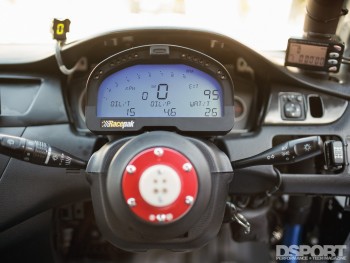 Taniguchi extracted a quickest lap time of 0:55.528. While this was not the quickest lap time on record, it was an impressive achievement for a vehicle’s first appearance at Tsukuba. The next month, at Fuji Speedway, the EVO represented Garage G-Force at HKS Premium Day. With Taniguchi once again at the helm, the EVO produced a best lap time of 1:42.154, finishing third in the Skyline GT-R dominated 4WD Class (S).
Taniguchi extracted a quickest lap time of 0:55.528. While this was not the quickest lap time on record, it was an impressive achievement for a vehicle’s first appearance at Tsukuba. The next month, at Fuji Speedway, the EVO represented Garage G-Force at HKS Premium Day. With Taniguchi once again at the helm, the EVO produced a best lap time of 1:42.154, finishing third in the Skyline GT-R dominated 4WD Class (S).
The return of springtime weather beckons the EVO’s return to Aomori, as the new racing season approaches. Garage G-Force has prepared the EVO for its return home, dialed in for competition. After watching his car compete at Tsukuba and Fuji, the doctor anxiously awaits his EVO’s return, preparing to assault the track in the pursuit of quicker laps.



